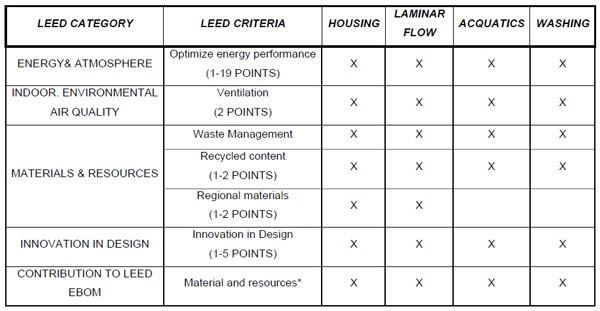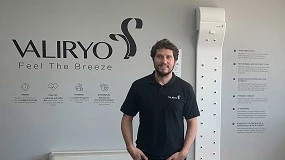Benefits of certifications (ISO 14001), reports (environmental report) or specific environmental programs (material recycling) to leed rating
Also Lab. Animal Facilities are in a transition phase towards more Sustainable Operations under the influence of “Greener” suppliers and producers of cages, sterilization equipment, air filtering systems and so on [2].
Most Environmental aware Organization moves in 2 different directions:
- Using new concept like Life Cycle Assessment [3]-[4] and Eco-Design [5] for reducing the global environmental impacts of their products during the full life cycle
- Using existing standard like ISO 14001 [6] ISO 50001 [7] for assessing and improving their environmental profiles at site.
Many of such activities are implemented on a voluntary base and they could testify the Environmental Commitment of such Organizations in achieving and satisfying new standards concerning the Environment. Using most appropriate existing media, Organizations could communicate their Environmental Policy, the Environmental Certification obtained, the Environmental Improving Objective implemented, their Commitment for Sustainability and similar Green concepts [8]. Very often all the information are reliable and correctly communicated but, sometime, the advertisement are only based on “Green washing Strategy” and not upon actual facts [9]. For helping Lab. Animal Facilities Managers in their decisions an addition tool could be utilized: the LEED certification, that is becoming more popular.
As it is well known the LEED certification apply to building and construction industry but choosing Green products and equipment could contribute in reaching high score in the LEED Rating System. [10]
The presentation deals with a simulation performed in a Lab. Animal Facilities applying the LEED Rating System using from one side, products redesigned according with Eco-Design and LCA methodologies and produced in a site having many Environmental certifications and initiatives, and from the other side, using products designed without Eco-Design and LCA methodologies and produced in a site not having Environmental certification and initiatives.
In the following table it is possible to see and understand how Green products contribute positively to the LEED Rating System.

Using the LEED matrix system for the same Lab. Animal Facility with the 2 scenario described above it is evident that using green products gives higher score in the LEED rating system getting easily the way for the certification.
The full presentation will give more details about the simulation and the score results in a vivarium operations.
[1] H. Stripple, R. Westman, D. Holm A.A, 'Development and environmental improvements of plastics for hydrophilic catheters in medical care: an environmental evaluation', 2008, Journal of Cleaner Production vol. XX, page 1.
[2] V. D’Incognito 'Ecodesign of products: continuous reducing of life cycle environmental impacts of (PSU) greener cages' 2010 FELASA 10th June 2010 Helsinki.
[3] A.A, ISO 14040 'Environmental management – LCA – principles and framework”, 2006.
[4] A.A, ISO 14044, 'Environmental management – LCA – Requirements and guidelines', 2006.
[5] A.A, ISO 14006, 'Environmental management systems - Guidelines for incorporating ecodesign', 2011.
[6] A.A, ISO 14001 'Environmental management Systems – Requirements with guidance for use', 2004.
[7] A.A, ISO 50001 'Energy management Systems – Requirements with guidance for use', 2011.
[8] V. D’Incognito, 'Environmental impact of disposable and reusable plastic cages', 2010, Animal technology and Welfare, page 147.
[9] V. D’Incognito, 'Greening the vivarium' 2012, ALN Buyer Guide 2012, page 15






